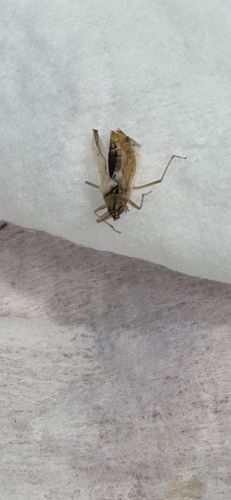Caddisfly (Larva or pre-pupal stage, possibly emerging or dried)
Scientific Name: Trichoptera (Order level, specific genus/species difficult to identify from image)
Order & Family: Order: Trichoptera, Family: Likely Limnephilidae (Northern Case-making Caddisflies) or similar case-making family given the visible remnants of a case and general appearance, though definitive family identification is difficult from this image.
Size: Larvae: 1-40 mm depending on species. Adults: typically 2-30 mm body length, with wingspans ranging up to 70mm for larger species.

Natural Habitat
Larvae are aquatic, found in freshwater environments such as streams, rivers, lakes, and ponds. Adults are terrestrial but usually found near water sources where they emerged.
Diet & Feeding
Diet varies greatly by species. Larvae can be detritivores (eating decaying organic matter), herbivores (grazing on algae and aquatic plants), predators (eating smaller aquatic invertebrates), or omnivores.
Behavior Patterns
Case-bearing larvae construct cases from silk and environmental debris, often camouflaging themselves. Adults are nocturnal and typically short-lived, primarily focused on reproduction. The larvae are aquatic or terrestrial depending on the species and family.
Risks & Benefits
Generally beneficial as bioindicators of water quality, as many species are sensitive to pollution. Larvae are an important food source for fish and other aquatic animals. No direct risks to humans; adults do not bite or sting. Some species can be a nuisance near lights at night.
Identified on: 8/9/2025